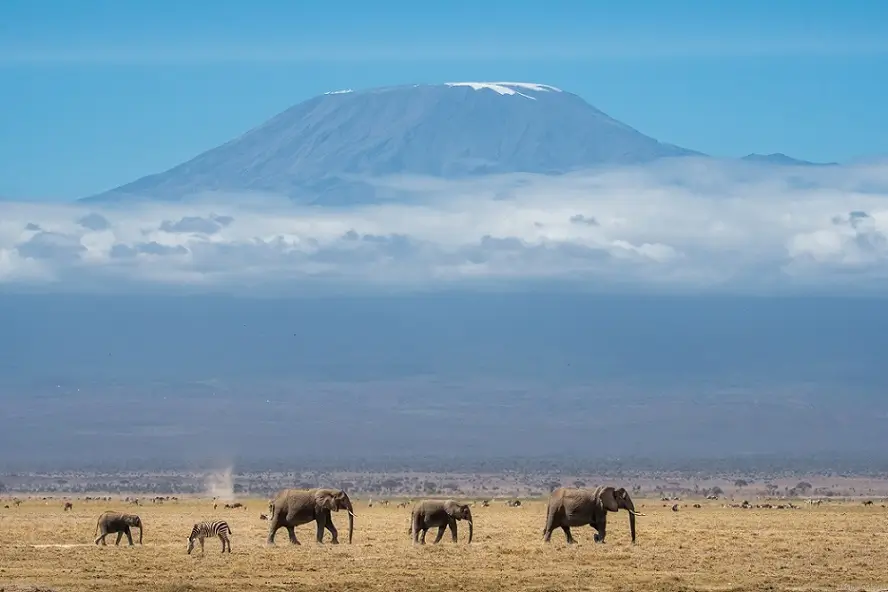The first person to climb Mount Kilimanjaro made history on October 6, 1889. But the full story is often misunderstood.
Mount Kilimanjaro, Africa’s tallest peak, has inspired explorers for centuries. Its snow-capped summit rises above Tanzania’s plains, inviting adventurers from around the world.
Before modern gear and guided treks, it was a mystery. Who would be the first to conquer it?
This post explores the climbers, the guides, and the journey behind the first successful ascent of Kilimanjaro. You’ll discover names often left out and facts buried in time.
Whether you’re a history lover or planning a climb, this story will inspire and inform.
Who Was the First Person to Climb Mount Kilimanjaro?
German geographer Hans Meyer is officially recognized as the first person to climb Mount Kilimanjaro successfully in 1889.
He didn’t climb alone. Meyer’s success was only possible with the help of Austrian mountaineer Ludwig Purtscheller and local Chagga guide Yohani Kinyala Lauwo.
Their journey was Meyer’s third attempt. On his previous climbs, weather and lack of equipment forced him to turn back.
The final ascent on October 6, 1889, marked a turning point in African exploration. It showed that Kilimanjaro’s icy summit was conquerable.
Meyer’s documented expedition inspired generations of climbers and added to scientific knowledge of the region.
The Role of Local Guides – The Forgotten Hero?
While Hans Meyer is credited in history books, his success owed much to his local guide, Yohani Kinyala Lauwo.
Lauwo was a young Chagga man, born near Kilimanjaro’s base. He knew the mountain trails long before foreign explorers arrived.
His physical strength, sharp instincts, and deep knowledge of the terrain were critical to the expedition’s success.
Yet for decades, Lauwo’s name was barely mentioned. Meyer and Purtscheller received the global spotlight, while the local hero remained unsung.
Today, Lauwo’s legacy is being honored. He represents the many African guides whose skill made exploration possible.
Previous Attempts Before 1889
Hans Meyer wasn’t the first to dream of Kilimanjaro’s summit—just the first to reach it.
In 1887, Meyer made his first attempt but turned back due to a lack of equipment and poor weather.
He returned in 1888 with explorer Oscar Baumann. That expedition failed too—this time, they were captured during a tribal conflict and had to abandon the climb.
These early attempts revealed Kilimanjaro’s harsh climate and complex terrain. The mountain wasn’t just high—it was unpredictable.
Each failure taught Meyer valuable lessons that prepared him for the successful 1889 expedition.
Impact of the Ascent on Future Expeditions
The 1889 ascent inspired climbers around the world. It proved Kilimanjaro was not only climbable—but worth the effort.
Explorers, scientists, and adventurers followed in Meyer’s footsteps. They studied the mountain’s glaciers, plant life, and geology.
The climb also helped map the region. It opened Kilimanjaro to international interest and positioned it as a major mountaineering goal.
Local communities began supporting these expeditions, creating jobs as guides and porters.
The climb didn’t just change history—it changed the future of travel in East Africa.
Celebrating the Legacy – How the First Ascent is Remembered Today
Kilimanjaro’s first successful climb remains a proud chapter in mountaineering history.
Each year, trekkers honor Hans Meyer, Ludwig Purtscheller, and Yohani Kinyala Lauwo by tracing their route to Uhuru Peak.
Local museums and plaques commemorate their achievement. Tour guides often share their story at key points on the trail.
Tanzanians especially celebrate Lauwo, who guided countless climbers even into his 70s. His role is now widely recognized.
The 1889 ascent reminds every climber: courage, preparation, and teamwork make the summit possible.
The Unsung Hero – Yohani Kinyala Lauwo’s Contribution
Yohani Kinyala Lauwo, just 18 at the time, played a vital role in the first Kilimanjaro summit.
As a local Chagga tribesman, Lauwo knew the terrain, climate, and hidden paths better than anyone.
He led Meyer and Purtscheller through dense forests, rocky trails, and freezing altitudes. His instincts and courage were unmatched.
Lauwo guided for decades afterward, helping over 500 climbers reach the summit. His legacy shaped Tanzania’s guiding tradition.
Today, he’s honored as a national figure—proof that knowledge of the land is just as valuable as ambition.
Common Myths and Misconceptions About the First Ascent
Many believe Hans Meyer climbed Kilimanjaro alone. He didn’t—he had strong support from Purtscheller and Lauwo.
Another myth claims the climb was smooth. In truth, Meyer’s first attempt failed due to weather and illness.
Some say Europeans were the only pioneers. That ignores Lauwo’s critical role as guide and mountain expert.
There’s also confusion about dates. Some think the summit happened in 1888—it actually occurred in October 1889.
Clearing up these myths highlights the teamwork and persistence behind this historic achievement.
Why This Story Still Matters Today
The story of the first person to climb Mount Kilimanjaro inspires climbers across generations.
It reminds us that great achievements come from courage, preparation, and working together.
Meyer, Purtscheller, and Lauwo showed the power of human determination in facing nature’s toughest challenges.
Their journey paved the way for millions to follow, turning Kilimanjaro into a symbol of endurance and hope.
In today’s world, their story encourages us to dream big—and take bold steps to reach our own summits.
FAQs About the First Person to Climb Mount Kilimanjaro
Who was the first person to climb Mount Kilimanjaro?
Hans Meyer is credited as the first person to reach the summit in 1889, alongside Ludwig Purtscheller and Yohani Kinyala Lauwo.
When was Mount Kilimanjaro first climbed?
The first successful ascent was completed in October 1889, after Meyer’s previous attempts were stopped by illness and bad weather.
Did Hans Meyer climb Kilimanjaro alone?
No. He climbed with Austrian mountaineer Ludwig Purtscheller and was guided by local Chagga tribesman Yohani Lauwo.
Why is Yohani Kinyala Lauwo important?
Lauwo played a key role as the local guide. He led the climbers safely and later became a legendary Kilimanjaro guide.
Are there any myths about the first Kilimanjaro climb?
Yes. Some believe Europeans climbed alone or that it was a single-person effort. In truth, it was a team achievement.
Conclusion
The first successful climb of Mount Kilimanjaro wasn’t a solo effort. It was a powerful collaboration.
Hans Meyer, Ludwig Purtscheller, and Yohani Kinyala Lauwo made history in 1889 by reaching Africa’s highest peak.
Their story continues to inspire today’s adventurers. It’s a reminder that exploration, resilience, and teamwork can overcome the toughest obstacles.
Whether you’re planning your own climb or just curious about history, this journey proves that even the sky isn’t the limit.




